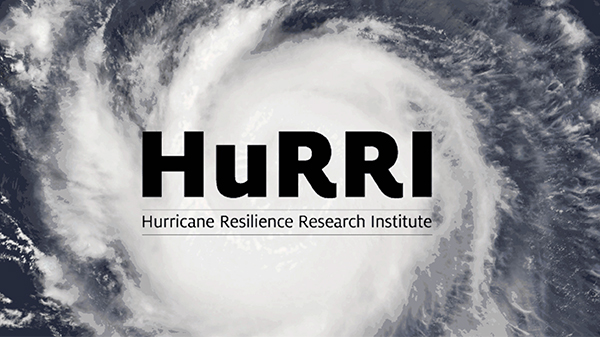Texas Tech Joins Gulf Coast Universities to Address Hurricane Resilience

A new multi-institution research center will focus on helping the Gulf Coast better prepare for and mitigate the damage and loss of lives from hurricanes and other severe storms.
The Hurricane Resilience Research Institute (HuRRI) draws upon the strengths of its seven participating universities, from flood mitigation and hurricane modeling to public policy. Applications for the first round of research funding will be due in early 2018.
The institute includes seven universities located in states spanning the Gulf of Mexico: Texas Tech University, the University of Houston (UH), Rice University, the University of Texas-Tyler, Louisiana State University, the University of Miami and the University of Florida.
Each partner university brings special expertise to the new institute. Texas Tech, for example, has nearly two decades of experience and data, thanks to the Texas Tech Hurricane Research Team's (TTUHRT) Hurricanes at Landfall Project. Since 1998, TTUHRT has deployed to more than two dozen storms, collecting measurements of wind speed, temperature, relative humidity and pressure. Texas Tech also is home to the world-renowned National Wind Institute, which conducts innovative research in areas such as wind hazard mitigation, wind-induced damage and severe storms.
“Texas Tech is proud to be involved in the Hurricane Resilience Research Institute, and I feel certain our researchers will make a valuable contribution to the initiative,” said Joseph A. Heppert, vice president for research at Texas Tech. “We have outstanding faculty who have been studying hurricanes and severe storm events for decades. In addition to our world-class research in wind-damage reduction and storm-shelter design, Texas Tech has signature strengths in the atmospheric science of severe storms, storm modeling and prediction, the assessment and mitigation of secondary environmental impacts caused by severe weather, strategies for building more resilient communities, and the economic and social effects of these events on vulnerable populations.
“I am excited by the collaborations this program will foster with our peer institutions, state and regional agencies and the communities that often feel the direct impact of these terrible events. This is a real opportunity for Texas Tech to engage in cutting-edge collaborative research while serving the needs of the citizens of the State of Texas and the entire Gulf coast region.”
Amr Elnashai, vice president for research and technology transfer at UH, which will lead the institute, said the concept came together after hurricanes Harvey, Irma and Maria plowed through Texas, Florida and Puerto Rico this summer, illustrating the need to look at severe storms and their aftermath in a different way.
“Much attention has been paid to understanding how hurricanes form and move, as well as coastal vulnerabilities,” Elnashai said. “But there has not been a systems view that accounts for the interactions and inter-connectivity of impact and resilience of all societal support functions, to manage assessment, impact, response and recovery as a continuum, thus protecting vulnerable communities.”
Hanadi Rifai, the John and Rebecca Moores Professor of Civil and Environmental Engineering at UH, will serve as director. Her work includes an ongoing study of the chemical and microbiological contamination in Houston waterways after Harvey.
Each institution brings unique research capabilities – in engineering, science, policy, education and technology – and significant institutional support that will be supplemented with external grants and contracts and cooperative agreements to launch projects in hurricane resilience.
Rifai said the institute's work will focus on “anticipating and accommodating” the storms' impact, rather than the current model of waiting for a storm to pass and then devoting funding to repair and recovery.
“It will take an enormous number of resources to influence a paradigm change and offer evergreen solutions for hurricane resilience for affected communities,” she said.
Researchers from the seven institutions will be eligible to apply for the initial round of internal funding, which will require collaboration with at least one faculty member from another member institution.
Discoveries
-
Address
Texas Tech University, 2500 Broadway, Box 41075 Lubbock, TX 79409 -
Phone
806.742.3905 -
Email
vpr.communications@ttu.edu
